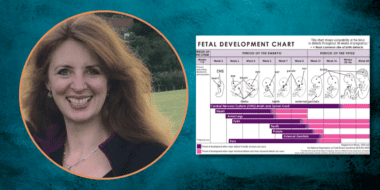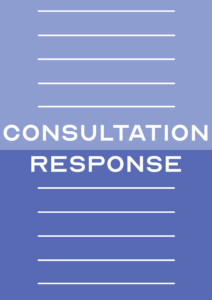On this page
Alcohol significantly impacts health. Globally, the World Health Organisation (WHO) estimates that harmful use of alcohol results in 3.3 million deaths every year, representing 5.9% of all deaths, and that alcohol is a causal factor in more than 200 disease and injury conditions. Overall 5.1% of the global burden of disease and injury is attributable to alcohol, as measured in disability-adjusted life years (DALYs).
Alcohol consumption causes death and disability relatively early in life, and there are gender differences in alcohol-related mortality, morbidity, as well as levels and patterns of alcohol consumption.
The impact of alcohol consumption on health outcomes in populations is largely determined by two separate but related dimensions of drinking: 1) the total volume of alcohol consumed; and 2) the pattern of drinking. In addition, there is evidence that a nation’s alcohol consumption directly impacts on the health of its citizens.
Facts and stats
- Alcohol is a causal factor associated with over 200 medical conditions (WHO, 2022)
- Alcohol is the leading risk factor for death, ill-health, and disability amongst 15-49-year-olds in the United Kingdom. (VizHub – GBD Results, 2019)
- Alcohol-specific mortality: Deaths from conditions wholly caused by alcohol. This definition is also used by the Office of National Statistics in their annual UK data release.
- Alcohol-related mortality: Deaths from conditions which are wholly or partially caused by alcohol. For partially attributable conditions, a fraction of the deaths is included based on the latest academic evidence about the contribution alcohol makes to the condition. (OHID, 2023)
- In 2022, there were 10,048 alcohol-specific deaths registered in the UK, a rate of 16.6 deaths per 100,000 people (according to the Office for National Statistic)
- This is 4.2% higher than in 2021, and 32.8% higher than 2019 (pre-coronavirus pandemic)
- This is the highest number of annual deaths from alcohol recorded since 2001 when recording began
How many people die from alcohol in the UK, by ONS records? by The Institute of Alcohol Studies
- In 2022, 7,912 people died in England from alcohol-specific causes, a rate of 14.5 deaths per 100,000
- 1,276 people died in Scotland, a rate of 22.6 deaths per 100,000
- 486 people died in Wales, a rate of 15.4 deaths per 100,000
- 356 died in Northern Ireland, a rate of 19.5 deaths per 100,000
Deaths per UK nation 2001 onwards by The Institute of Alcohol Studies
Ratio of Scot:Eng death rate – log scale by The Institute of Alcohol Studies
Deaths per region 2001 onwards by The Institute of Alcohol Studies
- Male alcohol-specific deaths in England and Wales are 4 times higher in the most deprived areas than the least deprived areas. (ONS, 2022)
- In Scotland, people in the most deprived areas are six times more likely to be admitted than those in the least deprived areas. (PHS, 2023)
- The alcohol-specific death rate is 50% higher in the North East relative to the English average. (ONS, 2023)
- Across the UK, the alcohol-specific death rate for males is twice the rate for females (ONS, 2023)
Male death rate by deprivation by The Institute of Alcohol Studies
Female death rate by deprivation by The Institute of Alcohol Studies
- Over 75 people die every day in the UK because of alcohol (Scotland, Wales and Northern Ireland do not regularly publish data on alcohol-related deaths)
-
- 21,912 people died from alcohol-related causes in England in 2021 (OHID, 2024)
- 3,705 people died from alcohol-related causes in Scotland in 2015 (ScotPHO)
- 1,500 people die from alcohol-related causes in Wales each year (PHW)
- 356 people died from alcohol-specific causes in Northern Ireland in 2021 (ONS)
- The highest alcohol death rates in the UK are among men and women aged 50 to 64 years of age
What is the UK alcohol mortality rate, by sex and by age? (ONS) by The Institute of Alcohol Studies
- Alcoholic liver disease accounts for over three quarters of alcohol-specific deaths in the UK
What is the main cause of deaths from alcohol in the UK?* by The Institute of Alcohol Studies
- Alcohol causes 7 types of cancer: Breast, Larynx, Mouth, Throat/Pharynx, Oesophageal, Liver, and Bowel
- This happens because your body breaks alcohol down into the reactive, highly toxic chemical ‘acetaldehyde’, which damages DNA and prevents your body from repairing the damage
- When DNA is damaged, a cell can begin growing out of control and create a cancer tumour
Cancer cases by The Institute of Alcohol Studies
- Alcohol-related cancers cause a similar number of deaths to alcohol-related liver disease
- Public awareness that alcohol causes cancer is very low, with only 13% of people identifying cancer as a health outcome of alcohol consumption (ScHARR)
Cancer deaths by The Institute of Alcohol Studies
- Broad measure – where the primary reason for hospital admission or a secondary diagnosis was linked to alcohol.
- Narrow measure – where the main reason for admission to hospital was attributable to alcohol. (NHS, 2022)
- By the broad measure:
- In 2021/22, there were a total 948,312 alcohol-related hospital admissions in England, at a rate of 1,734 per 100,000 persons.
- By the narrow measure:
- In 2021/22, there were a total 270,774 alcohol-related hospital admissions in England, at a rate of 494 per 100,000 persons (OHID, 2023)
In 2021/2022 there were:
-
- 35,187 alcohol-related hospital admissions in Scotland.
- 33,060 (94%) were treated in general acute hospitals, relating to 21,480 patients
- half of these were first time alcohol-related patients
- 2,127 (6%) admissions occurred in psychiatric hospitals
- Men were 2.3 times more likely than women to be admitted: 856 per 100K compared to 365
- 35,187 alcohol-related hospital admissions in Scotland.
How many alcohol-related hospital admissions are there in Scotland? by The Institute of Alcohol Studies
- By the broad measure:
- There were 25,146 admissions of 17,839 patients to Welsh hospitals in 2021/2022.
- By the narrow measure:
- There were 13,815 admissions of 9,035 patients to Welsh hospitals in 2021/22. (Public Health Wales, 2022)
- There were over 27,000 alcohol-related admissions to hospitals in 2017/18, the majority of which were for mental and behavioural disorders
- 21,087 mental and behavioural disorders due to use of alcohol
- 5,071 alcoholic liver disease cases
- 1,715 cases due to toxic effect of alcohol (DoH, 2019)
- In England, only one in five dependent drinkers are predicted to be in treatment. (PHE, 2021)
- Almost two thirds of those starting treatment for alcohol in 2021/22 were self-referred. (OHID, 2023)
- From 2013/14 to 2019 there was a 20% decline in the number of people entering alcohol treatment, despite the number of people in need remaining stable. Numbers entering treatment have begun to increase and there was a 10% rise in people seeking treatment for alcohol only in 2021/22, however these numbers remain lower than in 2013/14. (PHE, 2019) and OHID, 2023)
Briefings
Publications
Blogs

An introduction to Foetal Alcohol Spectrum Disorder (FASD)
11th December 2024

“Outta sight, outta mind?”. What do the public and professional stakeholders think about alcohol policy?
4th December 2024

Following the science on public health partnerships: the alcohol industry is no ordinary stakeholder
29th October 2024

How can we improve public understanding that alcohol can cause cancer?
22nd October 2024

How can genetics help assess the potential harms of moderate drinking?
14th October 2024

Alcohol trade groups mislead Prime Minister on duty ‘increase’, putting revenue – and lives – at risk
9th October 2024

Alcohol’s hidden calories: a missed opportunity in obesity policy
2nd October 2024

Alcohol and its Impact on the Adolescent Brain
1st August 2024


















